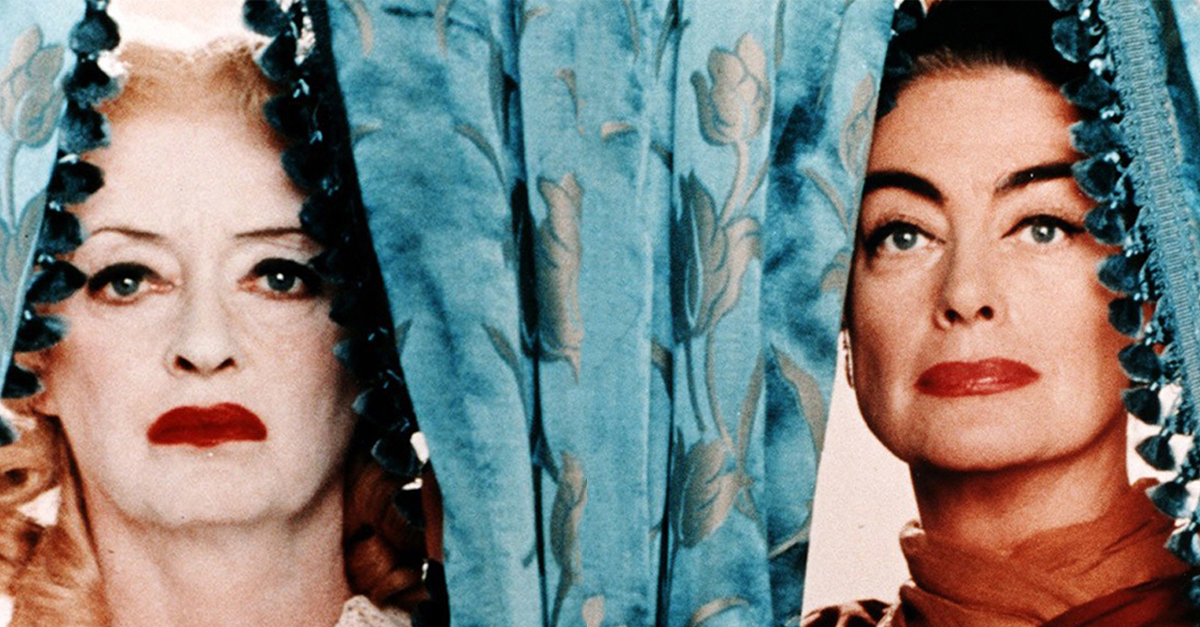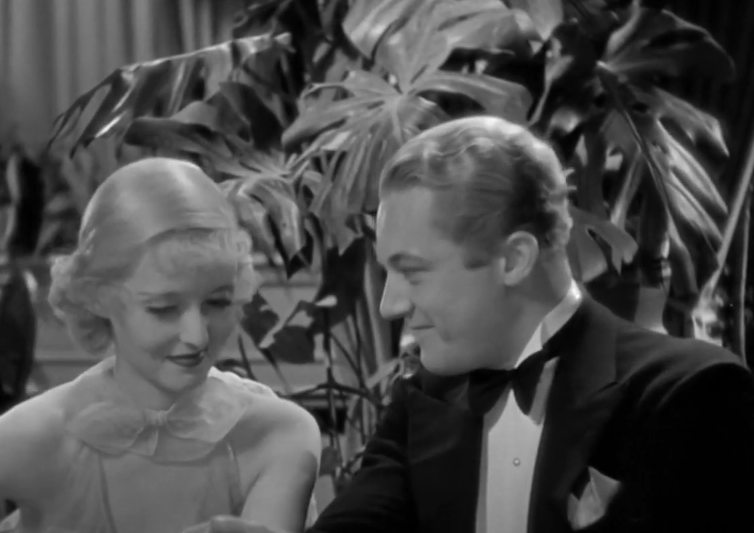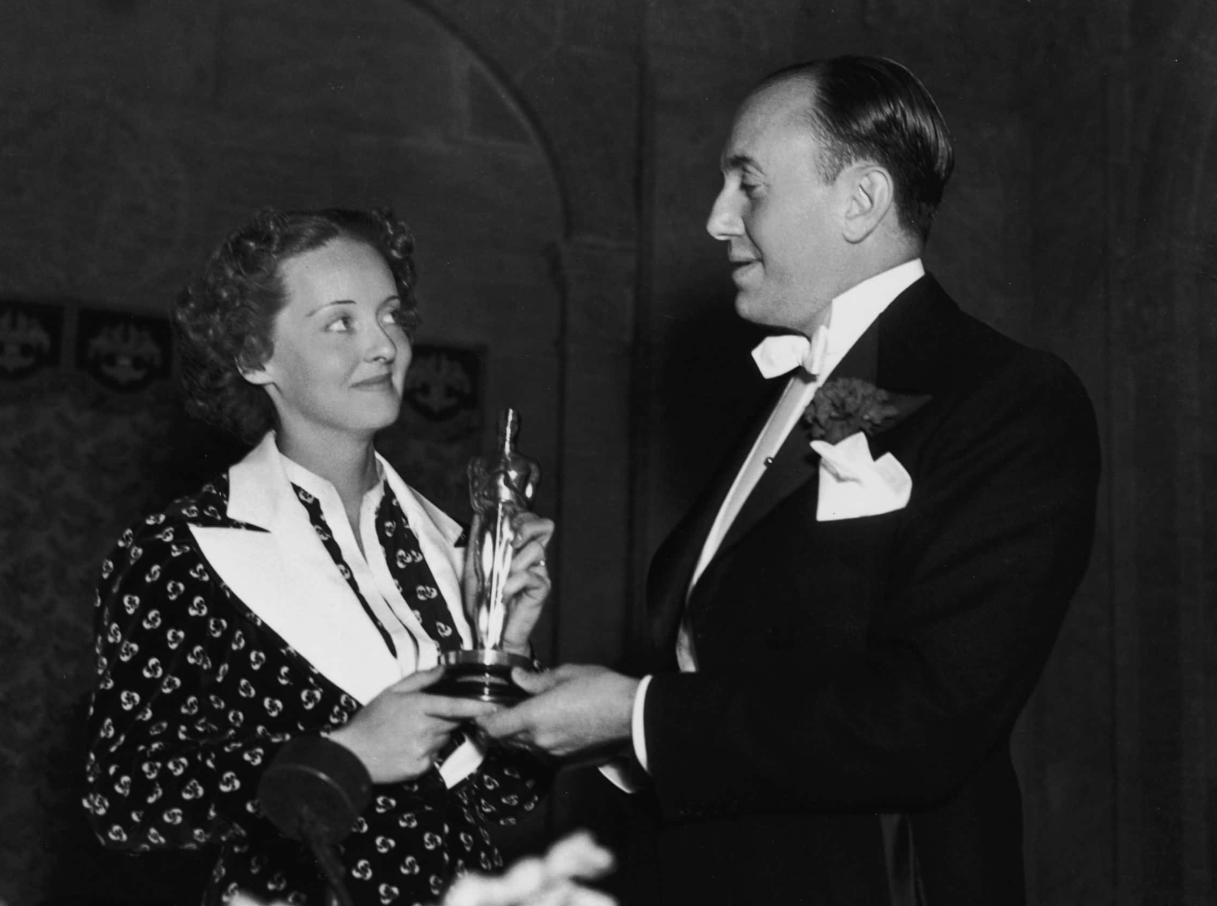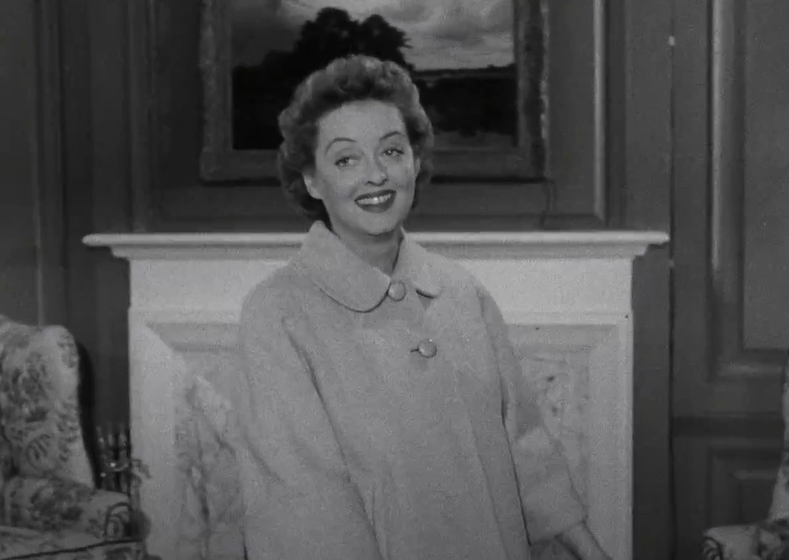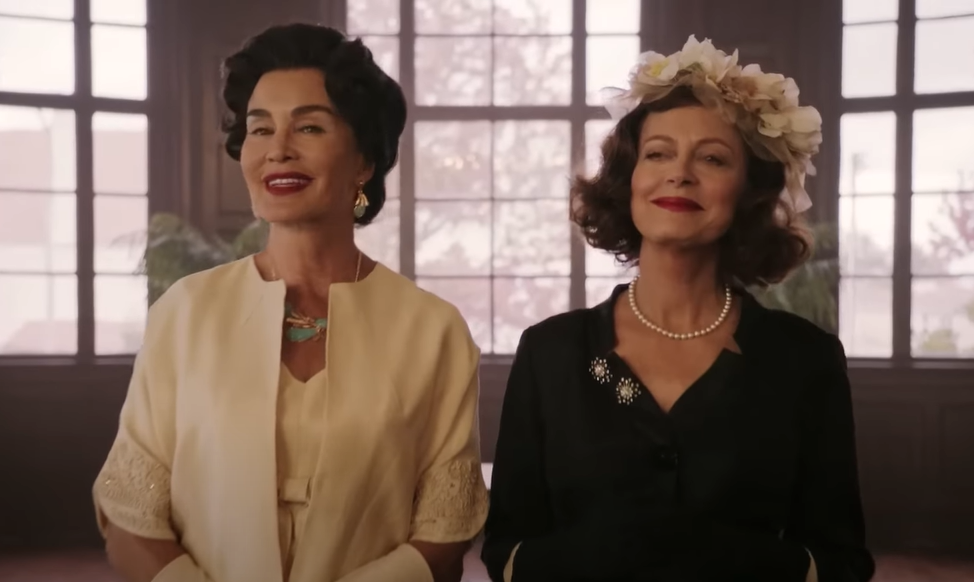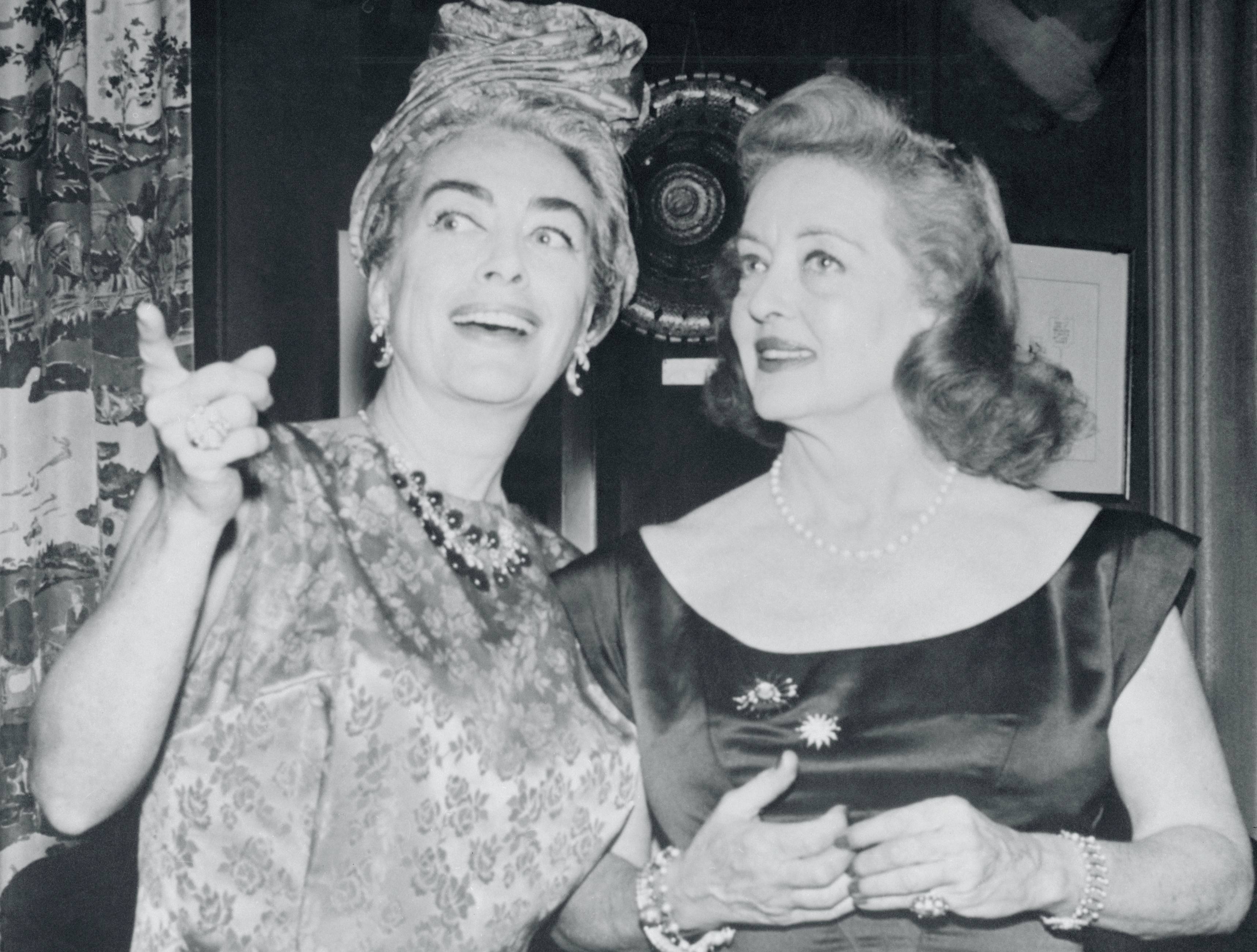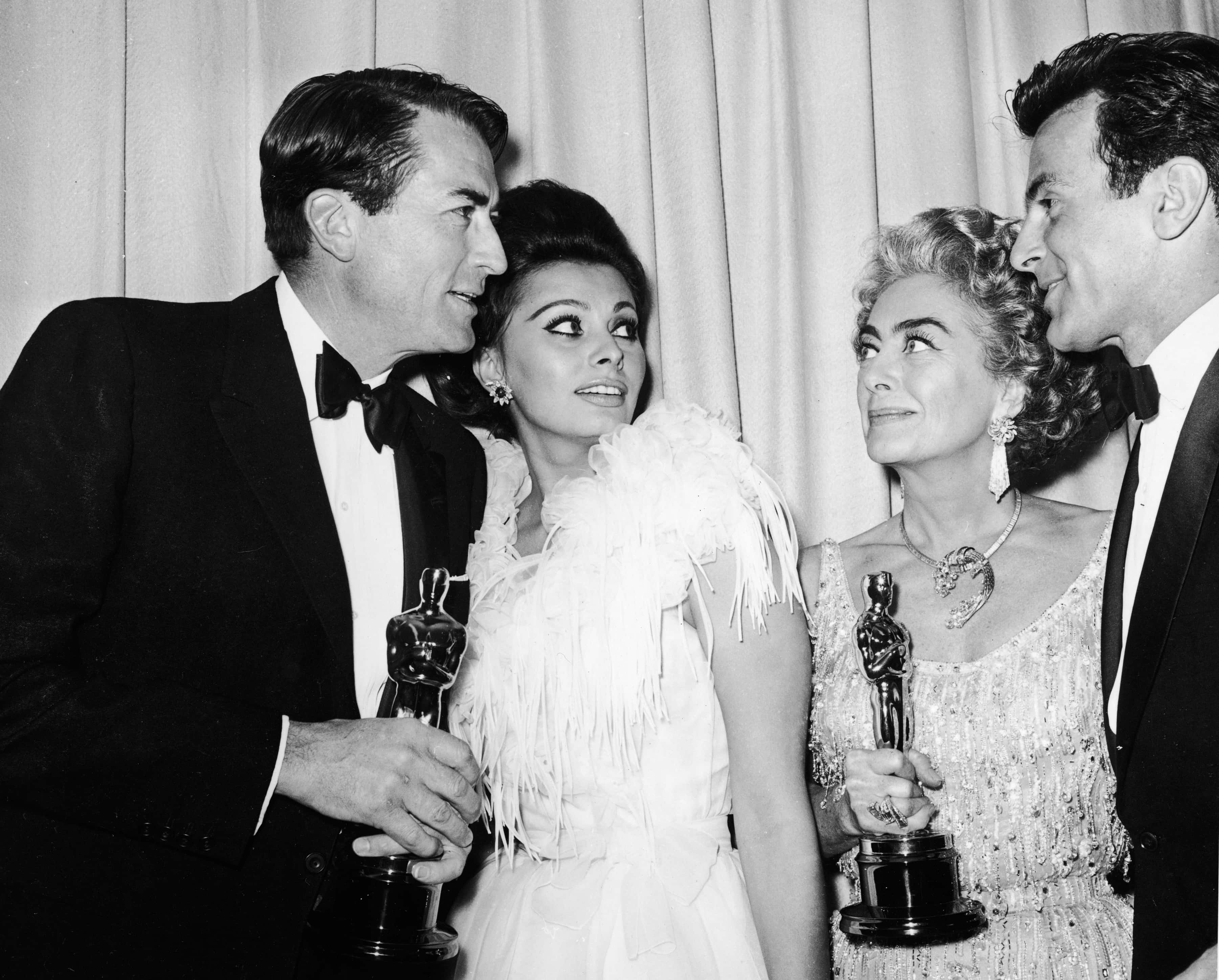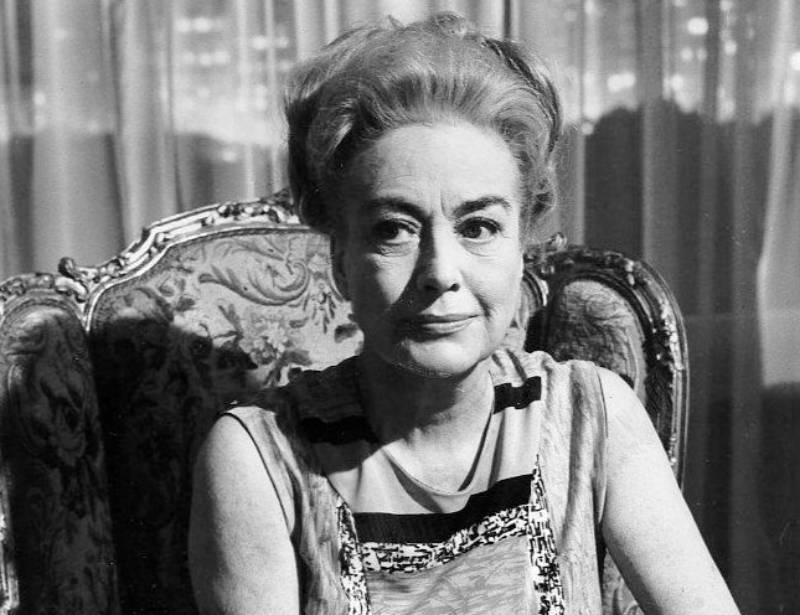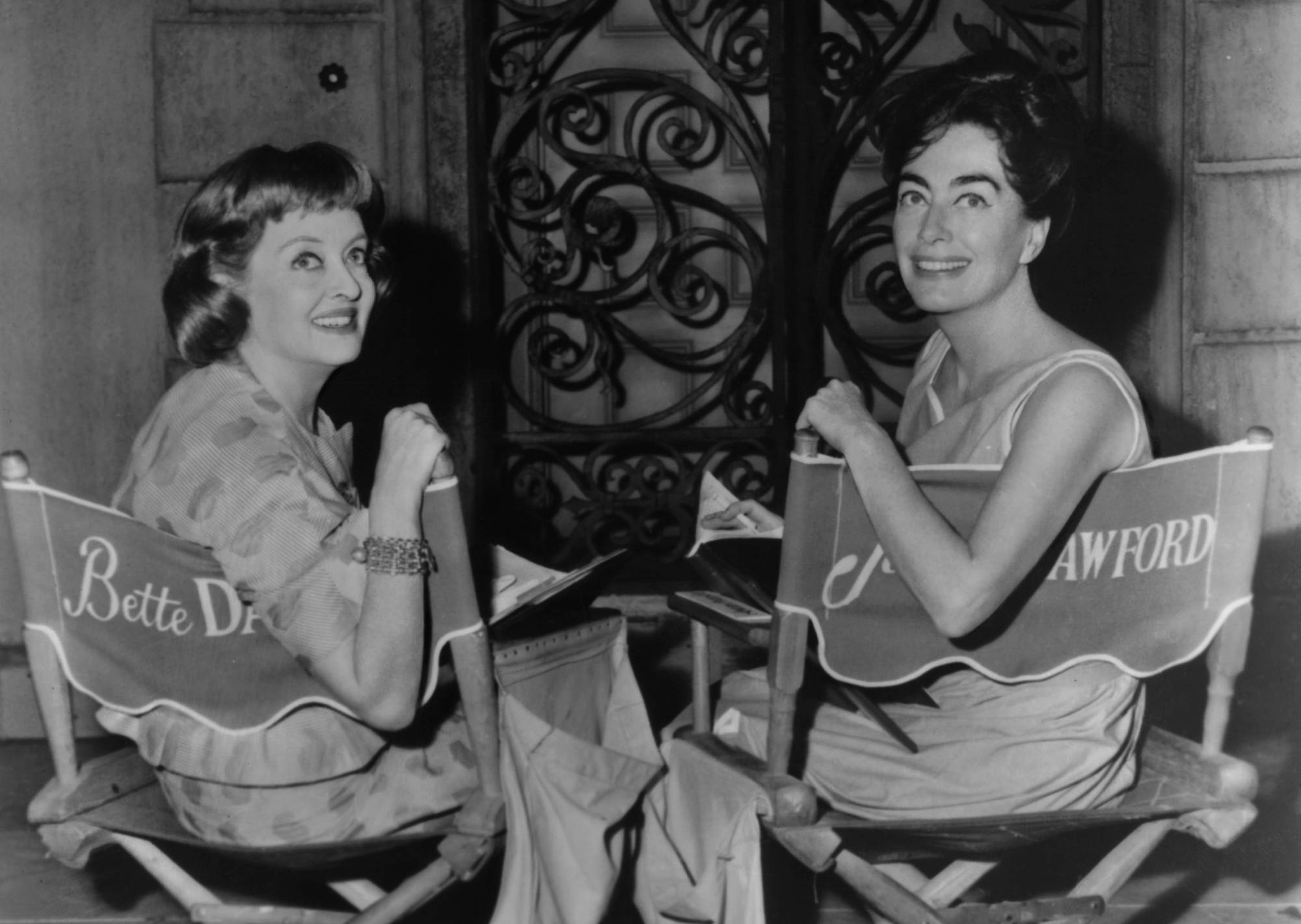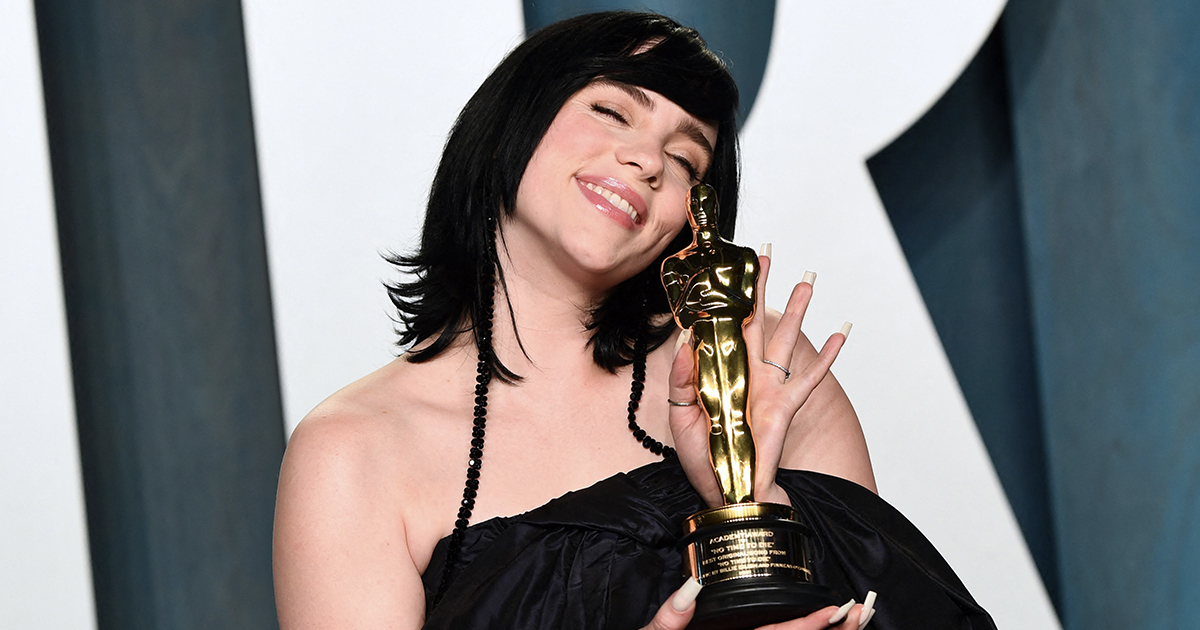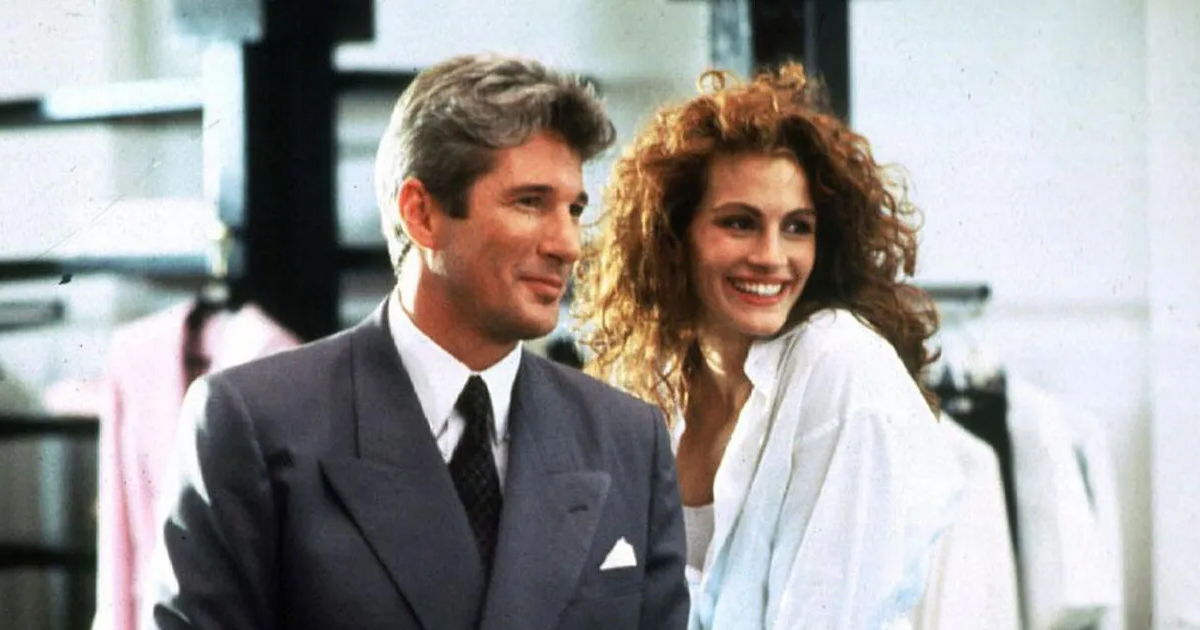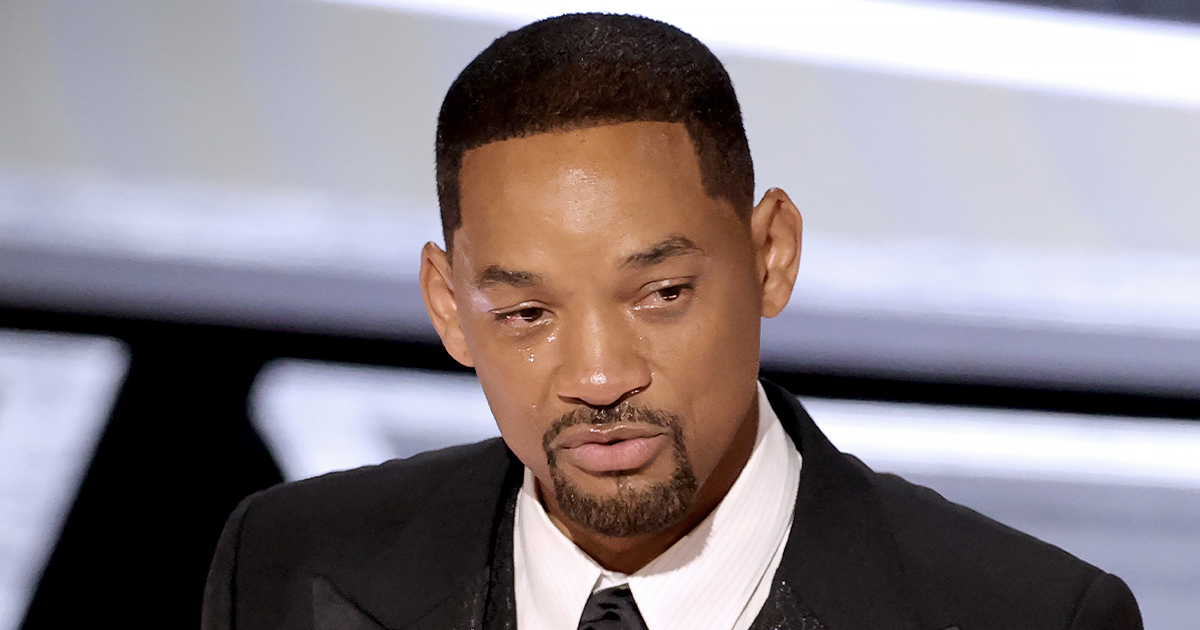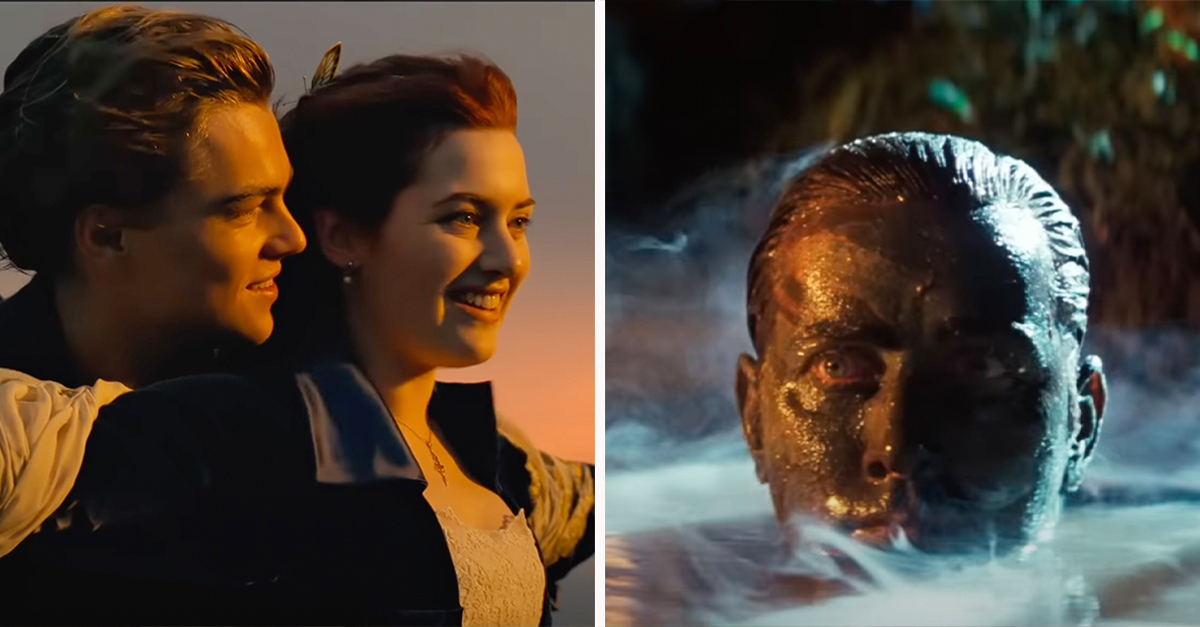Decades Of Drama
In real life, Joan Crawford and Bette Davis starred in a near-mythic tale of upstaged egos and decades-long resentments, with the dueling divas not only backstabbing each other off camera, but co-starring in a striking movie about pathologically competitive sisters. Here is their story.
Hollywood Upstart
Bette Davis and Joan Crawford’s very public rivalry commenced soon after Davis showed up on the Hollywood scene. Crawford’s Hollywood career had started in 1925, and she was ambitious, entering dance competitions and relentlessly promoting herself. By 1928, she was a major star.
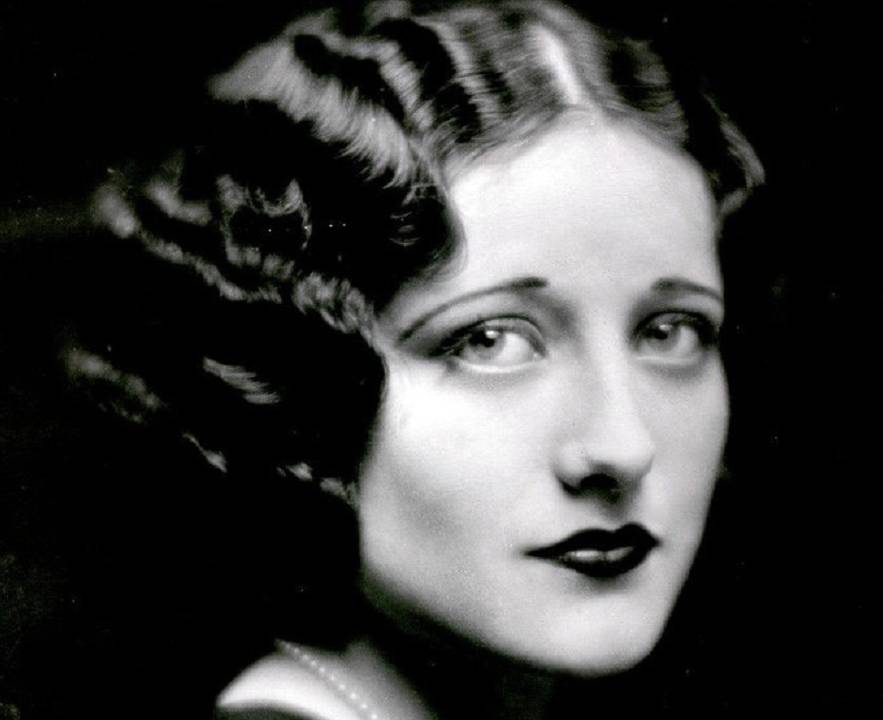 Metro-Goldwyn-Mayer, Wikimedia Commons
Metro-Goldwyn-Mayer, Wikimedia Commons
Davis Makes An Entrance
Like Crawford, Davis made the move from Broadway to Hollywood, but arrived five years after her future rival. Davis’s big break was in the role of an ill-mannered waitress in the 1934 picture Of Human Bondage. But by then, she’d already developed a distaste for Crawford.
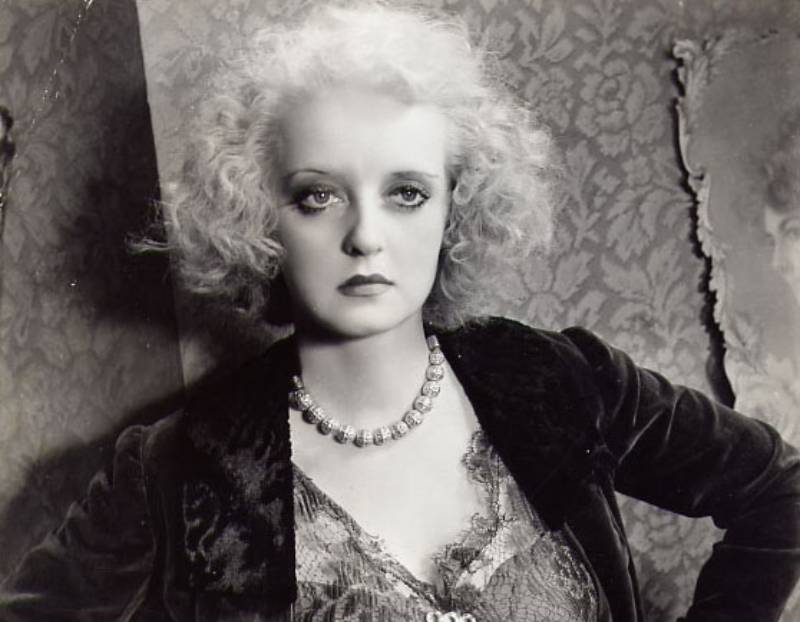 Warner Bros., Wikimedia Commons
Warner Bros., Wikimedia Commons
Not So Much A Lady
The year before, Davis got her first top billing—in a film called Ex-Lady. But Crawford’s sensational announcement that she was divorcing Douglas Fairbanks Jr eclipsed a publicity stunt for the new film. Davis blamed Crawford for poor box office numbers, and a lifelong feud was born.
Career Sleepover
Davis felt Crawford had jumped from one casting couch to the next in order to advance her career. “She slept with every male star at MGM except for Lassie,” she reportedly said. Crawford’s affair with heartthrob Clark Gable didn’t make a jealous Davis feel any better.
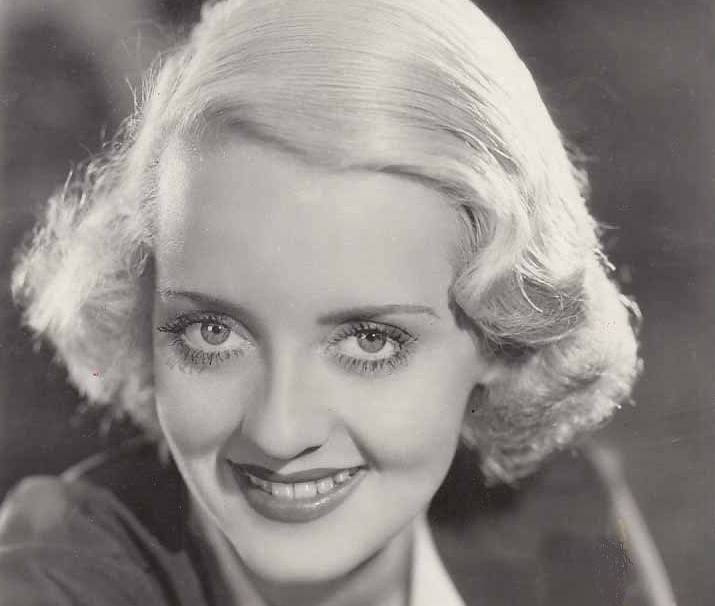 Warner Bros., Wikimedia Commons
Warner Bros., Wikimedia Commons
A Dangerous Time
Two years later, Davis was starring with Franchot Tone in a movie called Dangerous. Davis fell for Tone hard, finding him elegant and refined, but Crawford had him in her sights, showing up on the set to take him for lunch—and with Tone’s face covered in lipstick when he returned.
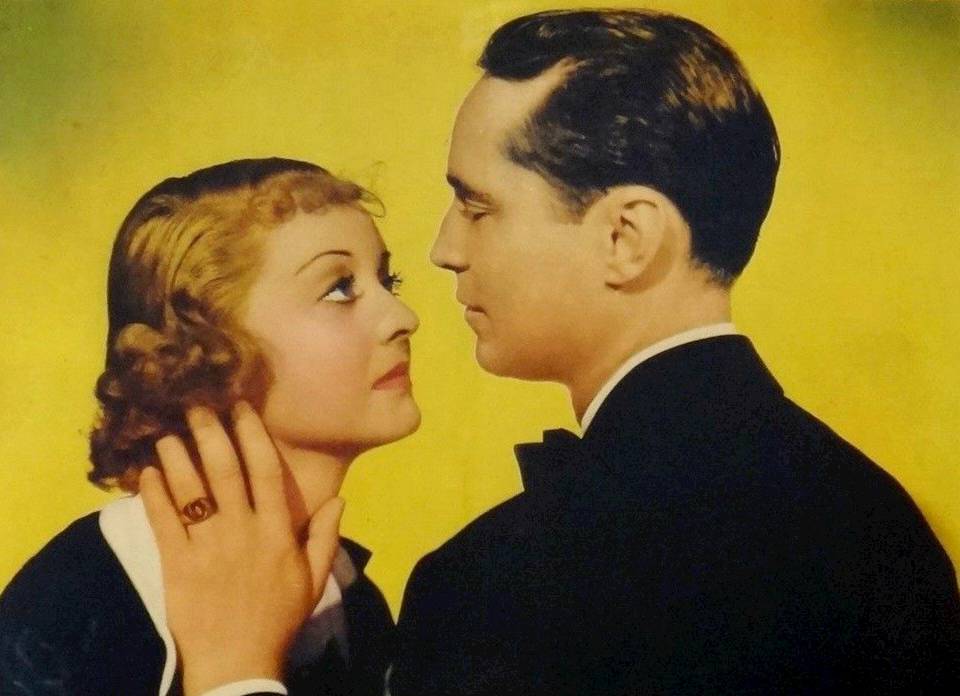 Warner Bros., Wikimedia Commons
Warner Bros., Wikimedia Commons
Weapons Engaged
Tone was still filming Dangerous when he and Crawford announced their engagement. Davis was convinced Crawford undercut her “deliberately and with complete ruthlessness”. Rumor had it that Crawford invited Tone over for dinner, and welcomed him without a stitch on her.
Acerbic Assessment
Crawford claimed Tone “thought Bette was a good actress, but he never thought of her as a woman”. It was the kind of put-down that showed the wit of both combatants—in a business where women had little power and time was not on their side.
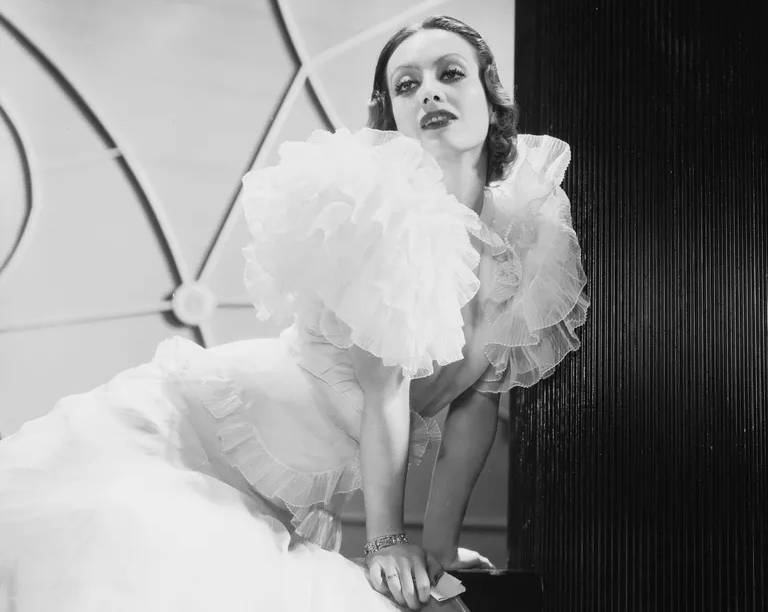 Harper's Bazaar, Wikimedia Commons
Harper's Bazaar, Wikimedia Commons
No Budging
Whatever the truth behind the barbs, Davis was excited to get an Oscar nomination for Dangerous, as she’d been controversially left off the nominee list the previous year. At the awards ceremony, Tone embraced Davis when she won, but Crawford didn’t budge.
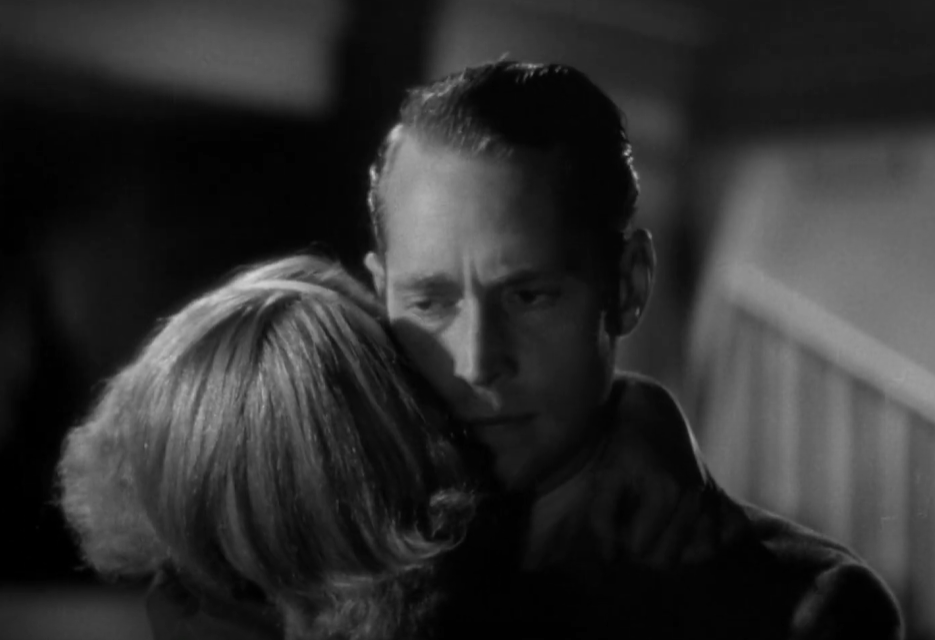 Warner Bros., Dangerous (1935)
Warner Bros., Dangerous (1935)
Dressing Down
Tone berated his wife for not congratulating Davis on her victory. Crawford relented—sort of. Davis hadn’t expected to win, and she was mad at studio boss Jack Warner, so she’d worn a simple blue dress in protest. Crawford turned and said, “Dear Bette! What a lovely frock”.
High Ground
Amidst the insults, it’s hard to find the moral high ground—each married four times, with divorce ending three of the marriages. Despite casting aspersions on Crawford, Davis cheated on her first husband by sleeping with director Wiliam Wyler, and then the tycoon Howard Hughes, too.
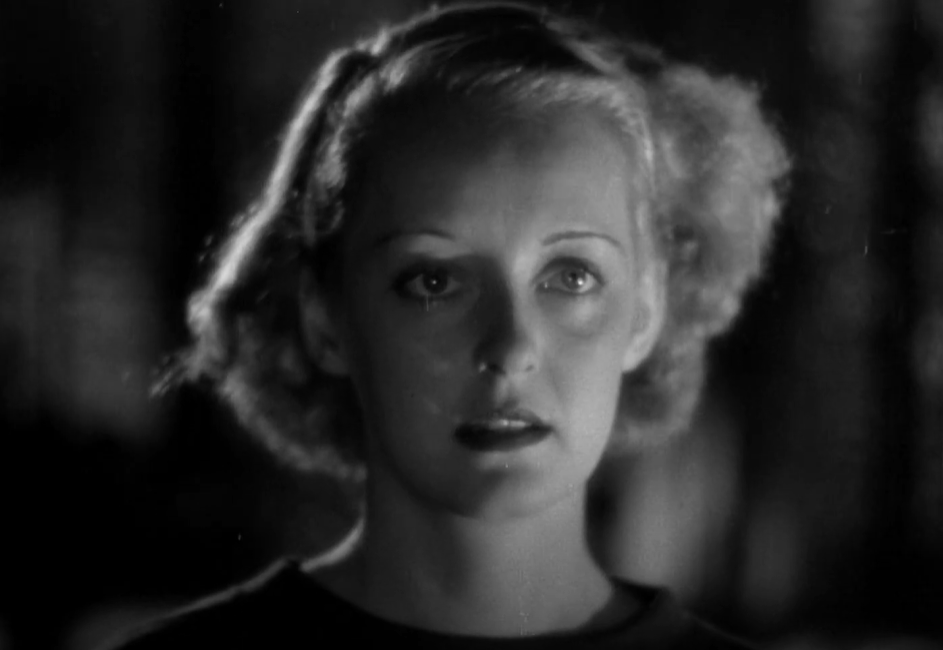 Warner Bros., Dangerous (1935)
Warner Bros., Dangerous (1935)
A Triumph
In 1939, Davis won her second Oscar—for Jezebel. It was also the year that Crawford and Tone, who’d been Davis’s former co-star and unrequited love, divorced. But any pause in the two women’s feuding would be short-lived, as Crawford would again step on Davis’s perceived turf.
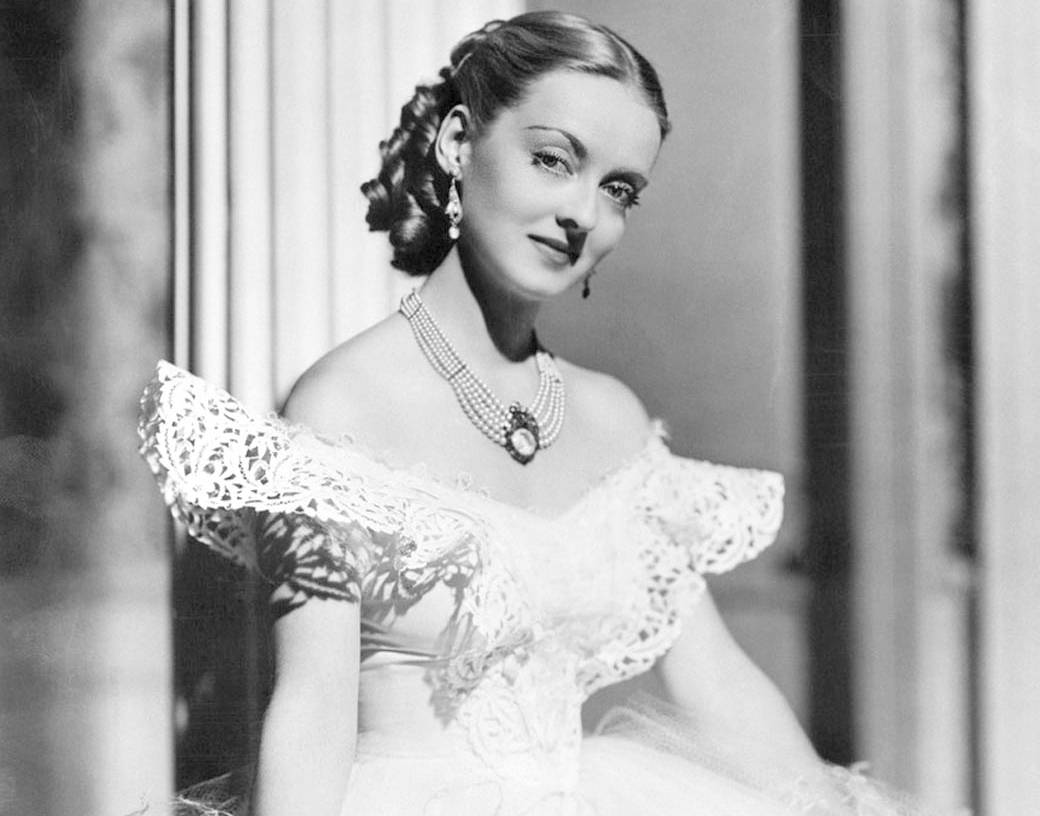 Warner Bros., Wikimedia Commons
Warner Bros., Wikimedia Commons
Attempted Truce
Crawford was either playing nice or devious when she switched studios in 1943, joining Davis at Warner Bros—and demanding a dressing room right next to her longtime rival’s. Crawford proceeded to leave Davis flowers and gifts, only to have each peace offering returned to sender.
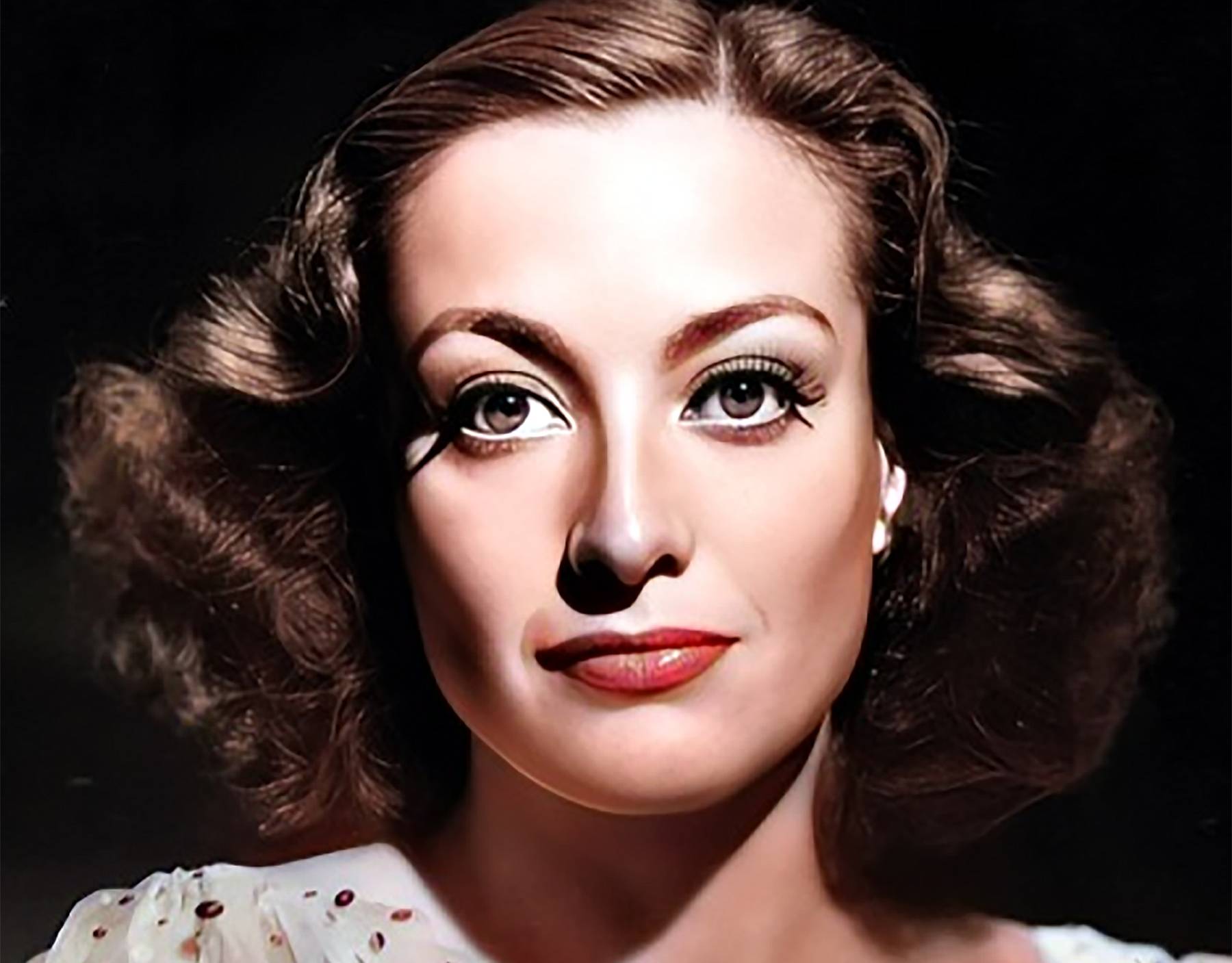 George Hurrell, Wikimedia Commons
George Hurrell, Wikimedia Commons
Crawford Takes The Lead
Warner Bros wanted Davis to star in Mildred Pierce, but she declined. Crawford was eager, as her career had been on the downswing for a few years now, appearing on a list of those labeled “box office poison”. She was even willing to do a screen test, a step down for a star like her.
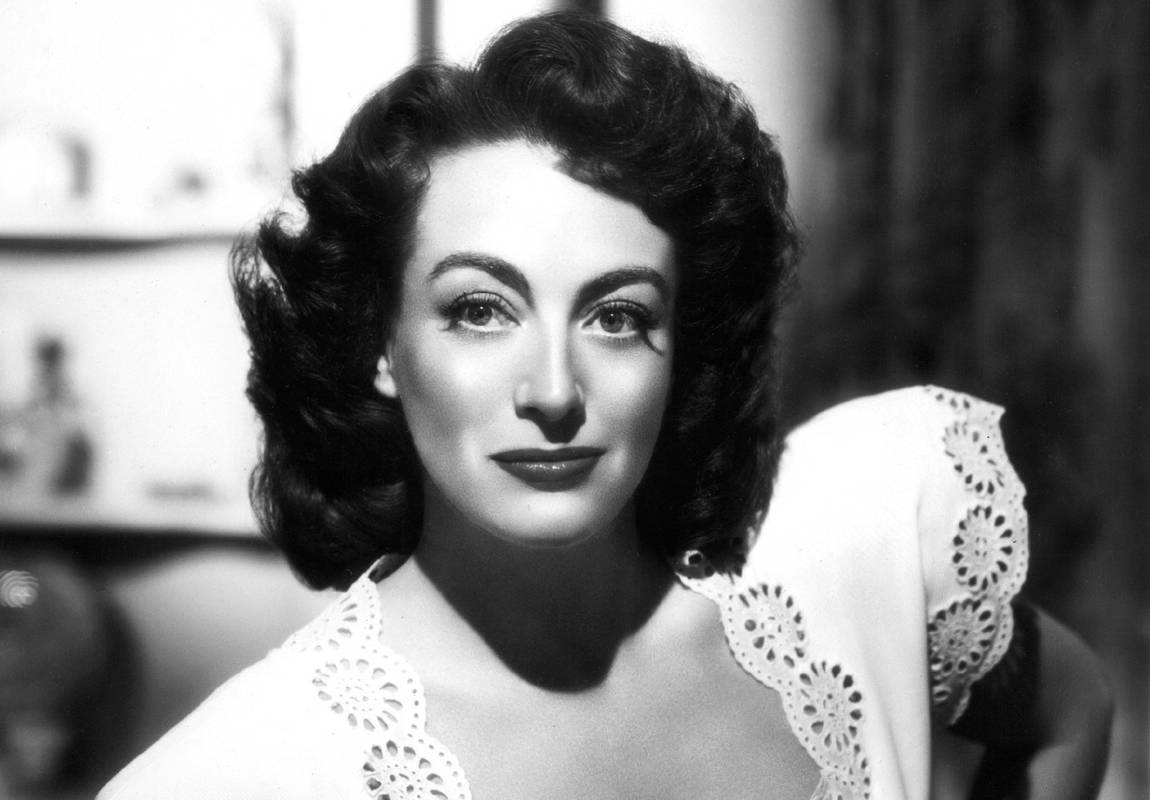 Studio publicity still, Wikimedia Commons
Studio publicity still, Wikimedia Commons
Suitably Awarded
It was a good move, as Crawford was awarded her one and only Oscar for that performance—and she accepted it from bed. Even though she was supposedly ill from the flu, she did manage to impeccably dress for the occasion before the photographers arrived.
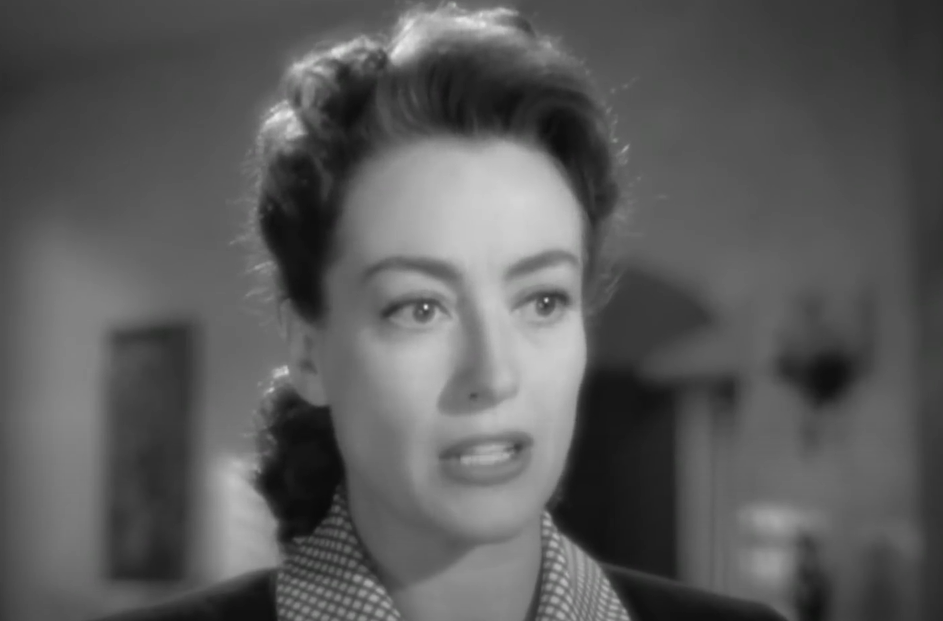 Warner Bros., Mildred Pierce (1945)
Warner Bros., Mildred Pierce (1945)
Encore Performance
History almost repeated itself a couple of years later. Again, Davis declined to play a part specially written for her, this time in a movie called Possessed. And again, Crawford stepped into the lead. Although she didn’t win an Oscar, Crawford did get nominated.
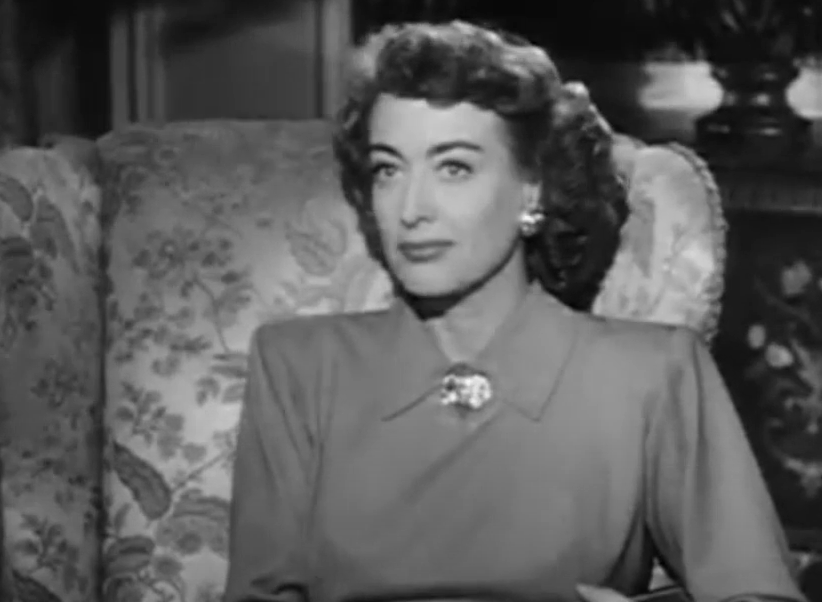 Warner Bros., Possessed (1947)
Warner Bros., Possessed (1947)
Caged Whispers
With all this tabloid drama, the studio wanted to pair Crawford and Davis in Caged, set in a women’s prison. Davis declined, seeing in the story’s undertones her suspicion that Crawford harbored libidinous interest in her, a suspicion consistent with Crawford’s private comments.
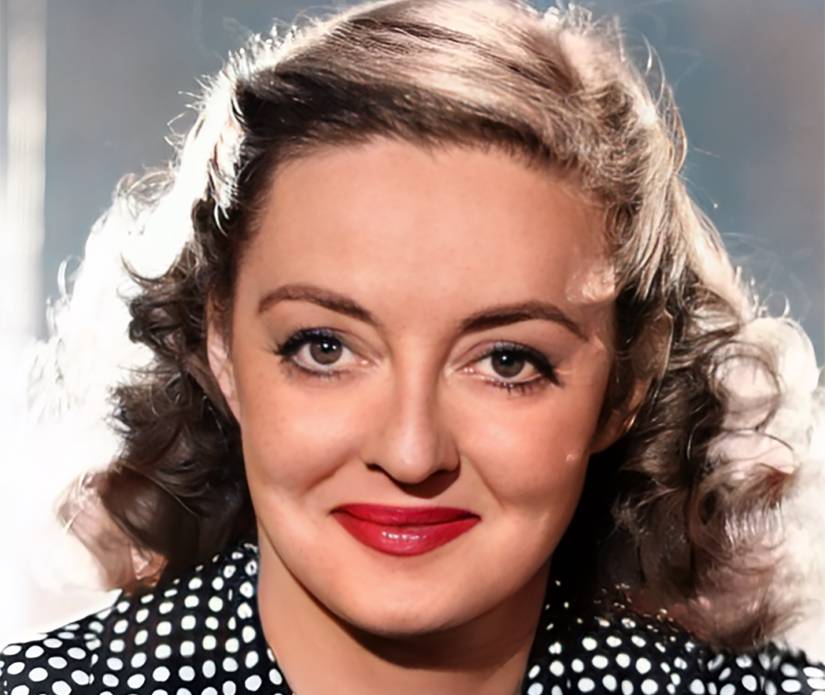 Alexander Kahle (1886–1968), Wikimedia Commons
Alexander Kahle (1886–1968), Wikimedia Commons
A Star Is Torn
Another notch in the rivalry came in 1952. One of Crawford’s friends, Katherine Albert, had soured on their relationship, and written a barely disguised tale of a fading actress desperate to hold onto the limelight. Davis was cast as the lead in this uncomplimentary look at her rival.
Shrug
Crawford attempted to shrug it off, with a dart: “Of course I had heard she was supposed to be playing me, but I didn’t believe it. Did you see the picture? It couldn’t possibly be me. Bette looked so old, and so dreadfully overweight”.
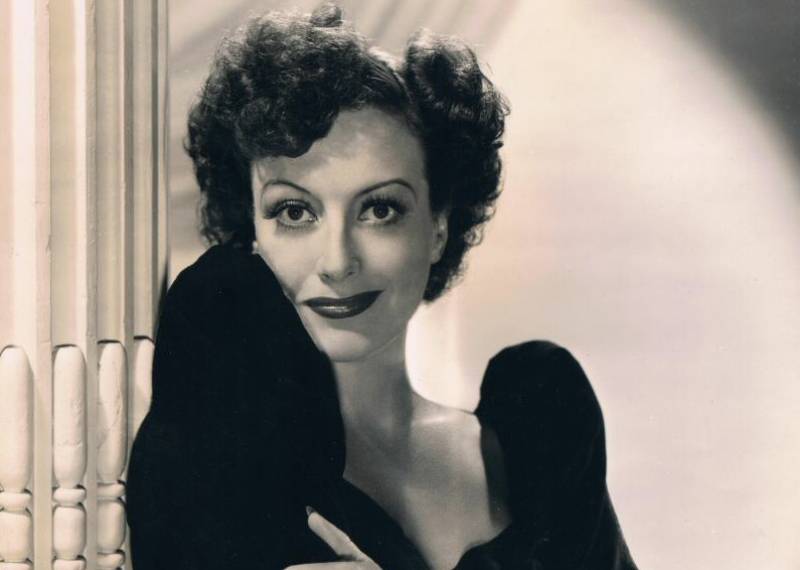 Studio Publicity, Wikimedia Commons
Studio Publicity, Wikimedia Commons
Baby Jane
But it was the two stars’ appearance in the same movie, released in 1962, that has likely left the biggest impression of their rivalry. Both actresses had been let go by Warner Bros long ago and were considered no longer bankable by studios. But an independent production came calling.
Reluctant Agreement
Davis was almost broke, so despite her feelings about Crawford, she agreed to co-star in What Ever Happened to Baby Jane?—a grim tale of sibling rivalry between two former actresses. It would be a chance for both performers to revitalize their respective careers.
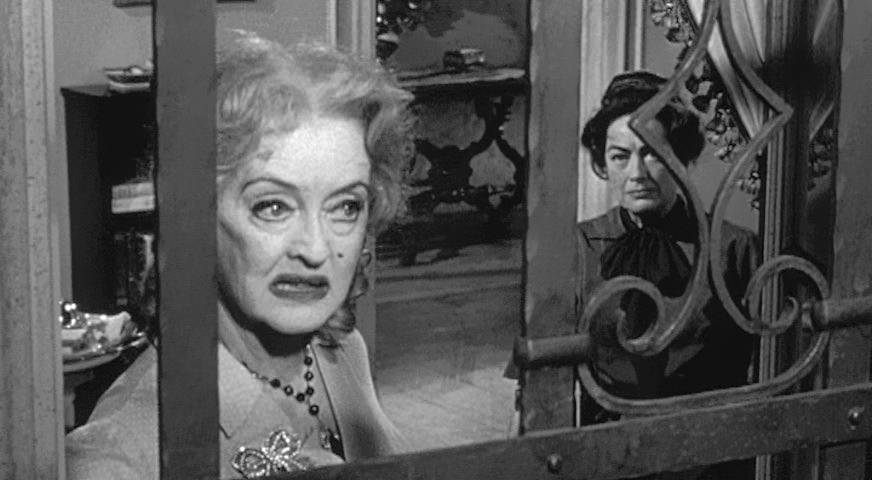 Warner Bros., Wikimedia Commons
Warner Bros., Wikimedia Commons
Too Close For Comfort
Davis insisted on playing Baby Jane, and wanted director Robert Aldrich to assure her he wasn’t having an affair with Crawford. Davis supposedly was afraid that he’d favor Crawford, playing the paraplegic sister, with more close-ups if the two of them were romantically involved.
 Warner Bros., What Ever Happened to Baby Jane? (1962)
Warner Bros., What Ever Happened to Baby Jane? (1962)
Vanity Fair
The two actresses had different images to preserve. Davis reveled in making delusional Baby Jane look “like Mary Pickford in decay,” and criticized Crawford’s glamorous-looking Blanche, a recluse in a wheelchair, for implausibly looking “like she lived in Elizabeth Arden’s beauty salon”.
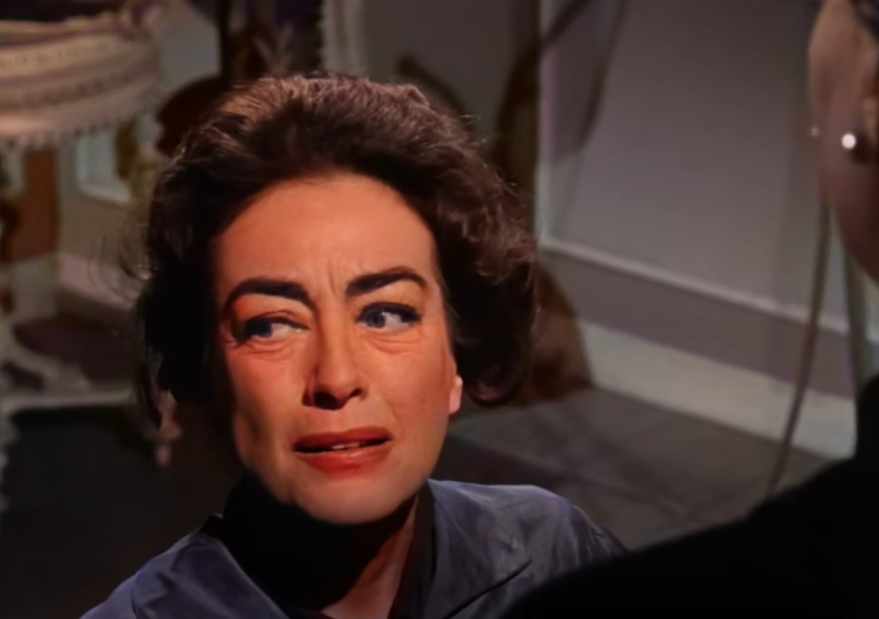 Warner Bros., What Ever Happened to Baby Jane? (1962)
Warner Bros., What Ever Happened to Baby Jane? (1962)
Polite
As she’d done at Warner Bros, Crawford sent flowers and gifts, but was rebuffed. Director Aldrich said his two stars “were like two Sherman tanks, despising each other,” being “painfully polite” in the presence of others, but each phoning him every night to complain about the other.
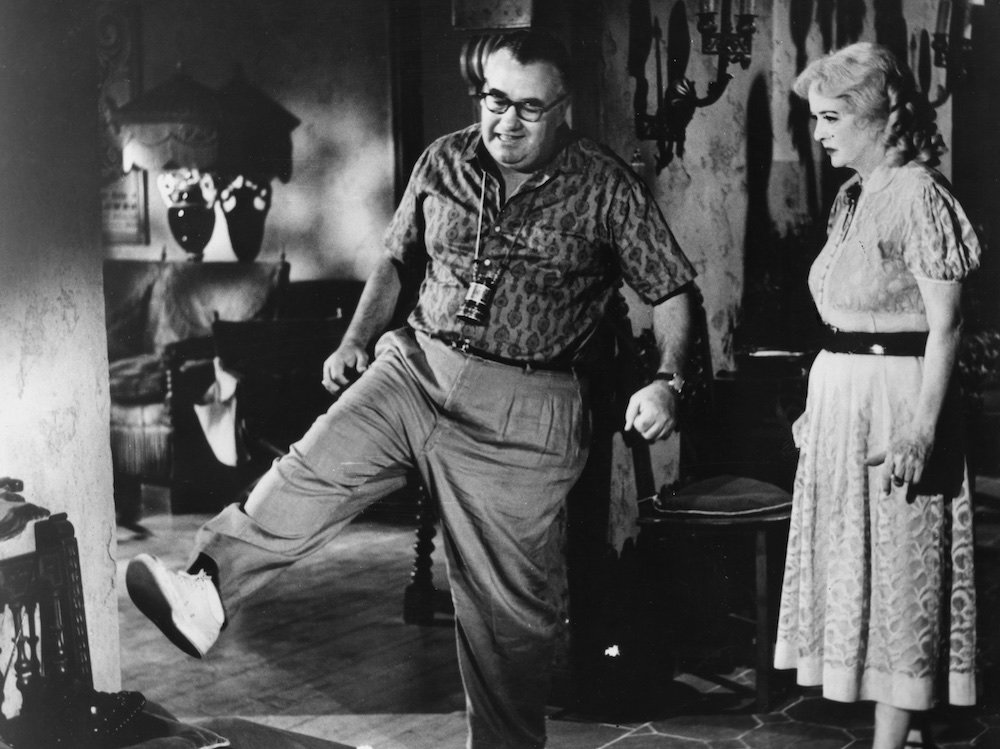 Warner Bros., Robert Aldrich (director), Wikimedia Commons
Warner Bros., Robert Aldrich (director), Wikimedia Commons
It’s The Real Thing
Unsurprisingly, the petty jabs piled up. Knowing that Crawford served on Pepsi’s board, Davis insisted on a Coke machine for her dressing room. Knowing that Davis had a bad back, Crawford ruined close-ups so Davis would have to repeatedly drag her across the room.
 Warner Bros., What Ever Happened to Baby Jane? (1962)
Warner Bros., What Ever Happened to Baby Jane? (1962)
Back Again
Davis screamed that her back was in pain, and the shoot was concluded. Crawford returned to her dressing room with a satisfied look on her face—perhaps to refresh herself with a Pepsi and vodka, reportedly her preferred drink.
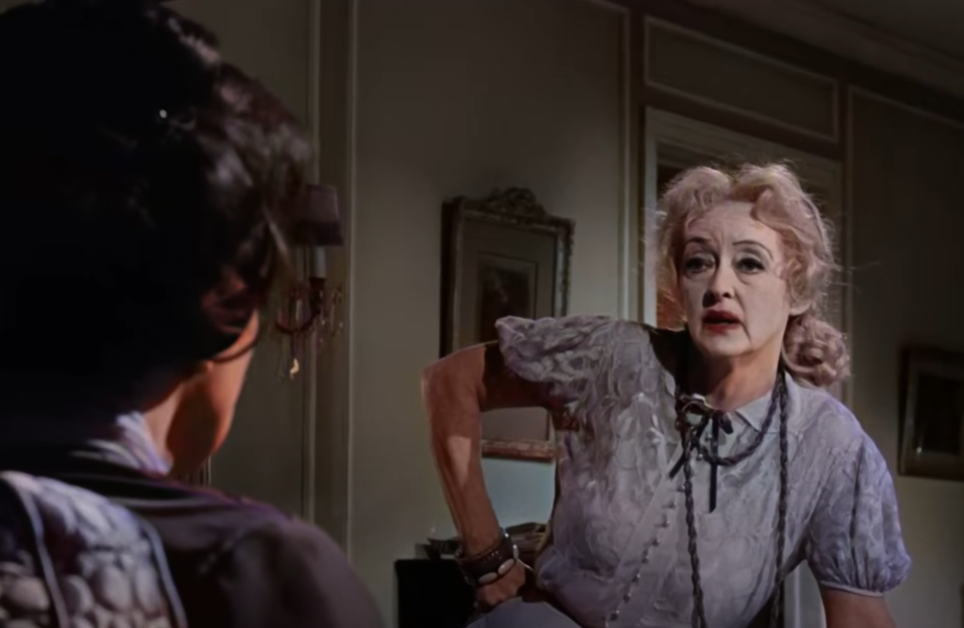 Warner Bros., What Ever Happened to Baby Jane? (1962)
Warner Bros., What Ever Happened to Baby Jane? (1962)
Head Shot
Crawford might also have been seeking revenge for a scene in which Davis had to hit an understandably wary Crawford in the head. Davis’s enthusiastic depiction may have hurt Crawford enough to require stitches—though the truth has become rather murky.
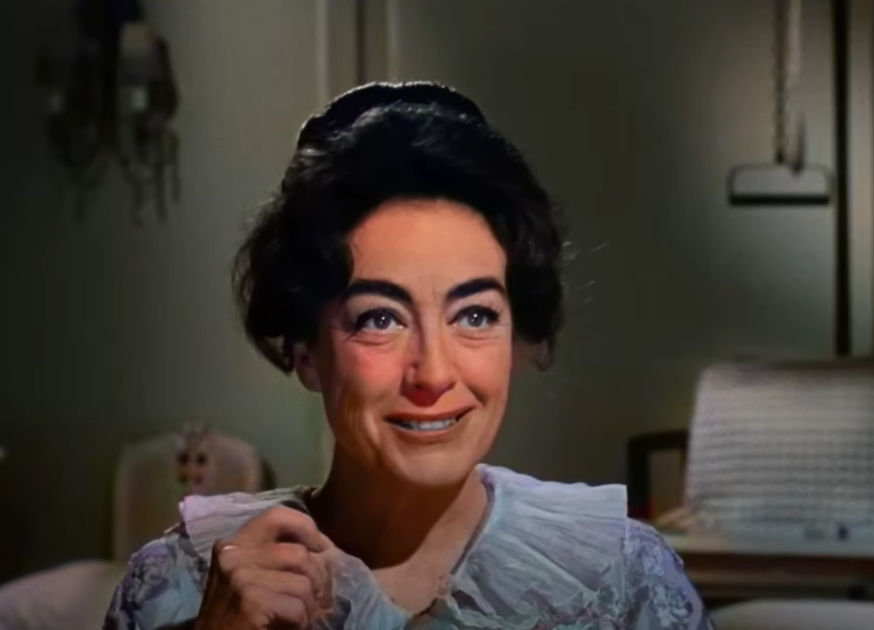 Warner Bros., What Ever Happened to Baby Jane? (1962)
Warner Bros., What Ever Happened to Baby Jane? (1962)
A Step Down
Certainly the two actresses had plenty of emotional material to work with. “The best time I ever had with Joan Crawford was when I pushed her down the stairs,” Bette Davis would later say. And the end of filming didn’t end their feud, with the enmity becoming even more intense.
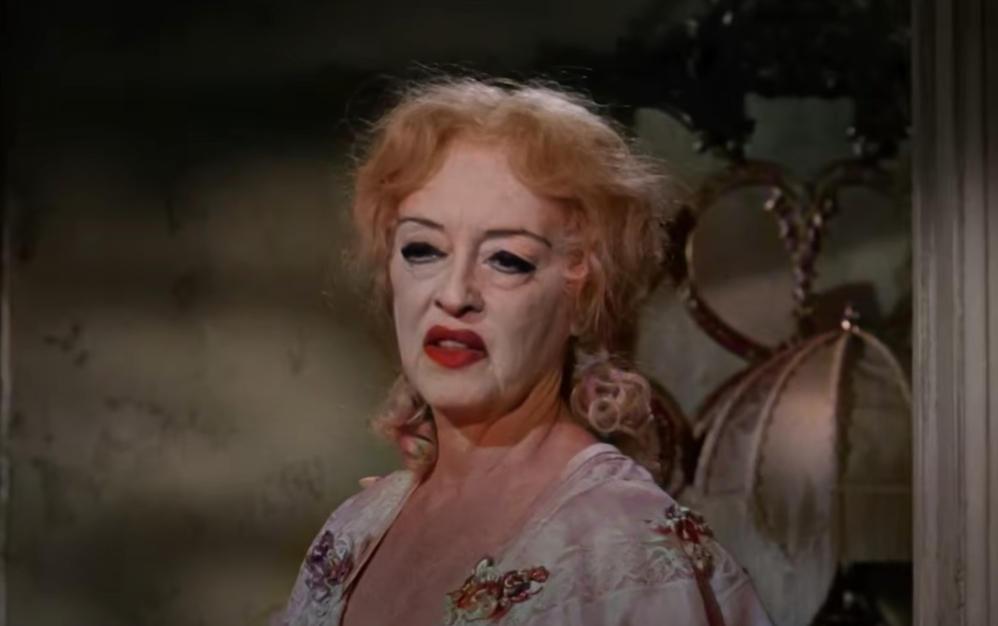 Warner Bros., What Ever Happened to Baby Jane? (1962)
Warner Bros., What Ever Happened to Baby Jane? (1962)
Volunteer Effort
Davis received an Oscar nomination for her performance, but not Crawford—who went on to bad-mouth her co-star, and volunteered to accept the award for any absent nominee. At the ceremony, Davis was sure she’d win, and made it clear she very much wanted a third Oscar.
Standing In
But Davis lost, and Crawford made her way to the podium to accept the statuette on behalf of Anne Bancroft, leaving Davis bewildered by both the loss and how her co-star, who hadn’t even been nominated, now held a statuette, to be photographed backstage next to Oscar winners.
Hushed Effort
The surprise box office success of Baby Jane brought the rivals together again—for Hush…Hush, Sweet Charlotte in 1964. But things got off to a rocky start with Paramount demanding Davis do some reshoots on another film. Then more drama ensued.
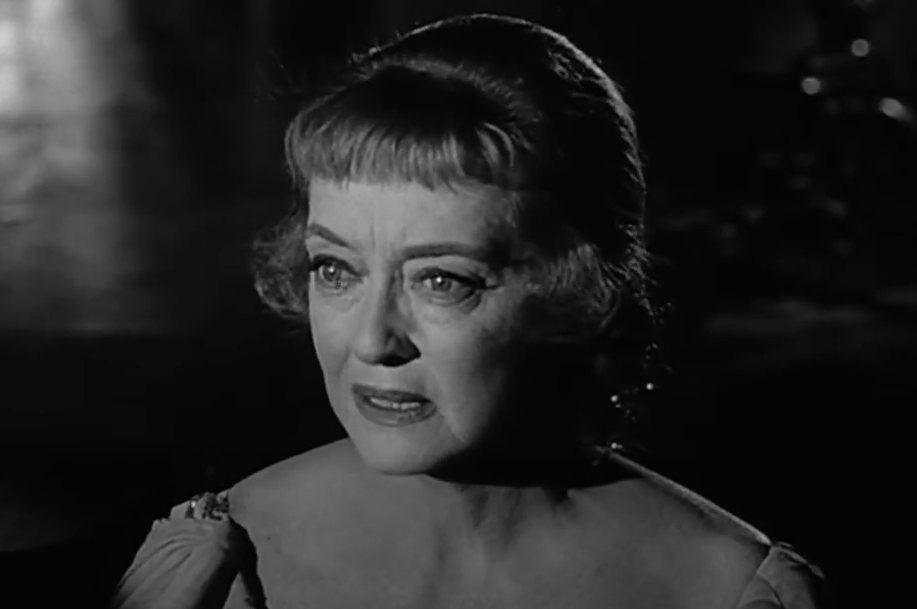 Twentieth Century, Hush...Hush, Sweet Charlotte (1964)
Twentieth Century, Hush...Hush, Sweet Charlotte (1964)
Wellness Check
Crawford left the Louisiana shoot and returned to Hollywood, saying she wasn’t feeling well. Perhaps there was a chill from Davis’s alleged slights—which allegedly included ignoring Crawford’s morning greetings. Possibly, she feared another Oscar humiliation too.
Devastated Response
Director Robert Aldrich hired a private investigator to see if Crawford really was sick, and eventually the studio’s insurance company insisted on recasting. "I heard the news of my replacement over the radio, lying in my hospital bed,” Crawford would later say, adding she cried for nine hours.
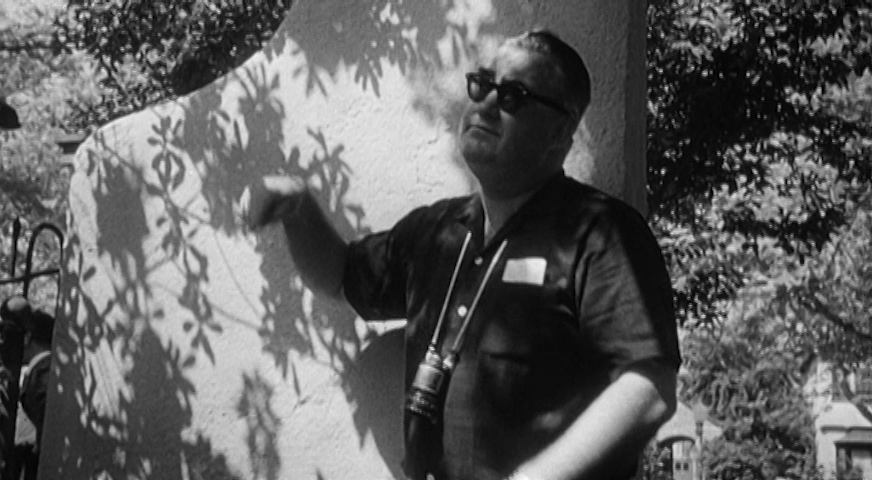 Warner Bros., Wikimedia Commons
Warner Bros., Wikimedia Commons
Offering A Defense
Joan Crawford died in 1977, but despite claims to the contrary, Bette Davis likely did not say words to the effect of “You should never say bad things about the dead. Only good. Joan Crawford is dead. Good”. Davis even defended her late rival after Crawford’s daughter wrote Mommie Dearest.
 Roland Godefroy, CC BY 3.0, Wikimedia Commons
Roland Godefroy, CC BY 3.0, Wikimedia Commons
Bad Review
Admitting she was not “Miss Crawford’s biggest fan,” Davis said that even so, Christine Crawford’s searing condemnation of her mother was a “detestable book”. Davis said Christine was free to live her own life as an adult without dwelling on her past.
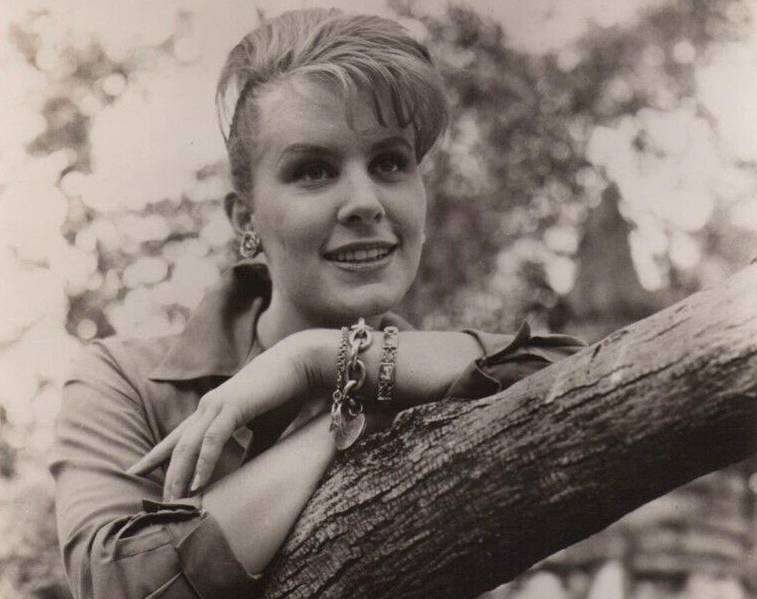 Unknown Author, Wikimedia Commons
Unknown Author, Wikimedia Commons
Parallel Project
But Davis, who died in 1989, had the misfortune to still be alive when her own daughter, BD, published a scathing tell-all book. Davis disinherited BD and defended herself in a 1987 memoir, saying the accusations would be harder to recover from than her strokes of a few years previous.
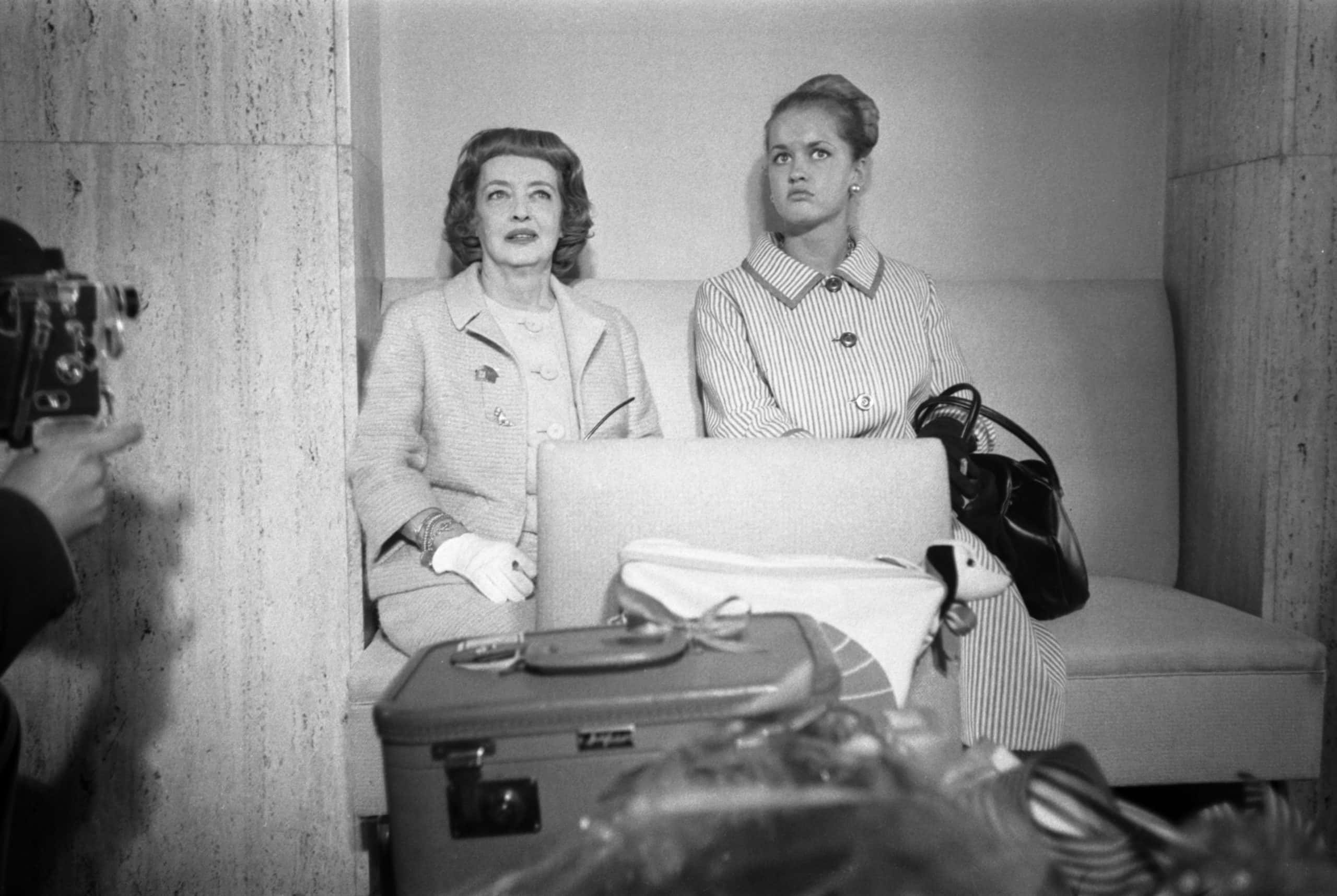 ASSOCIATED REPORTERS, Getty Images
ASSOCIATED REPORTERS, Getty Images
Career First
Yet Davis was candid over the years that she’d let her career success take priority over other areas of her life, like motherhood. On the red carpet at the 1963 Academy Awards ceremony, she was blunt: “Yes, I want that Oscar,” she told a columnist. “I have to be the first to win three”.
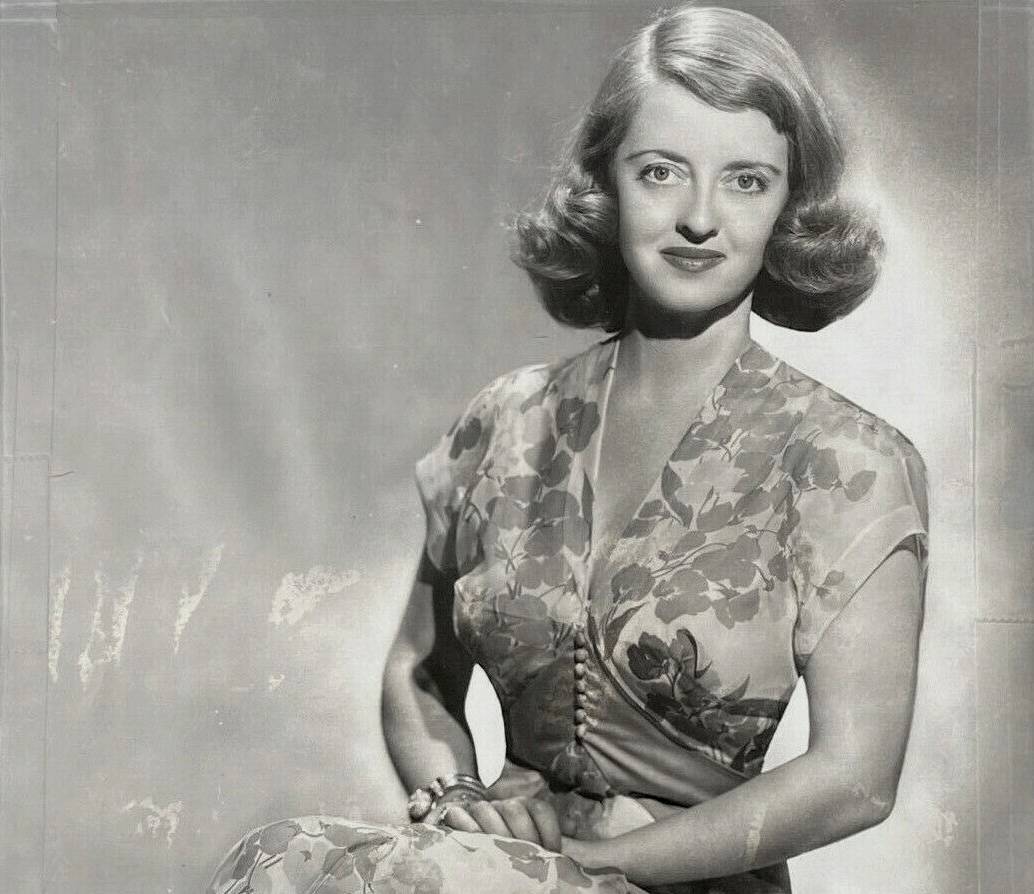 Warner Bros., Wikimedia Commons
Warner Bros., Wikimedia Commons
Not So Modest
Nearly 25 years later, she told an interviewer, “I always have to be the first as an Aries. I should have had it all. How very immodest of me, but I should have had it. No question”. Even in the late 1980s, Bette Davis was still convinced that Joan Crawford had robbed her of that third Oscar.
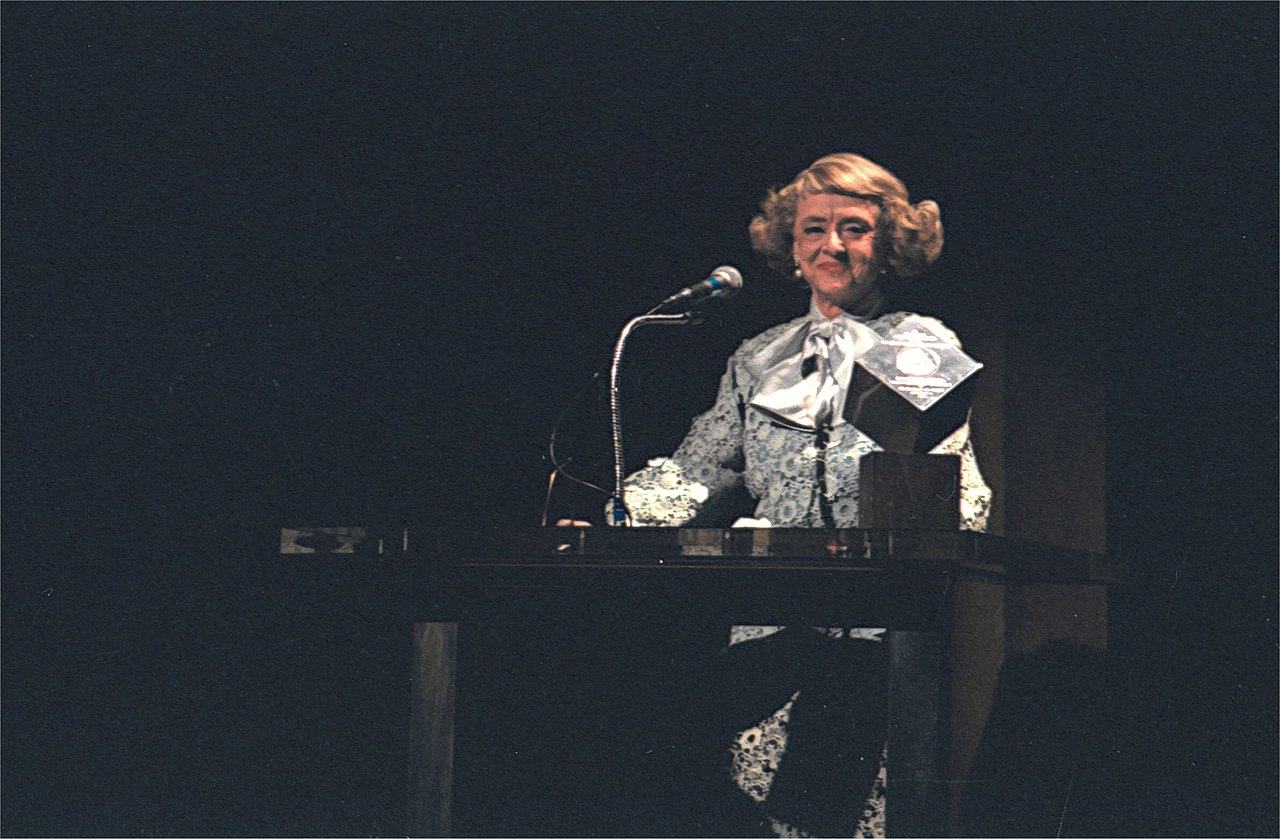 Alan Light, CC BY 2.0, Wikimedia Commons
Alan Light, CC BY 2.0, Wikimedia Commons
Some Appreciation
Bette Davis famously said, “Miss Crawford is a movie star, and I am an actress,” but she also said in her 1987 memoir that Crawford was a pro, and “I always thank her for giving me the opportunity to play the part of ‘Baby Jane’ Hudson”.
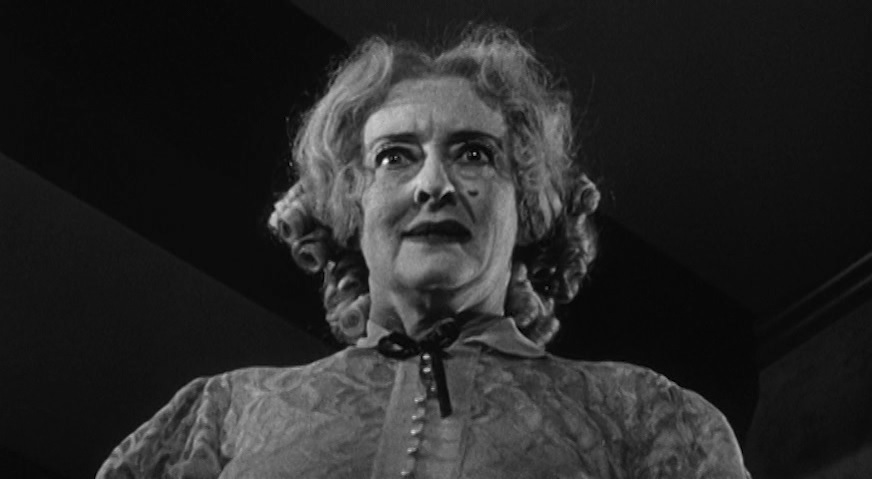 Warner Bros., Wikimedia Commons
Warner Bros., Wikimedia Commons
A Feud For The Ages
While serving as a cautionary tale about the dangers of chronic bitterness—and unrelenting ambition—the rivalry between Joan Crawford and Bette Davis showed moments of humanity—and even gratitude. It was a complicated feud for the ages, whether on screen or off.
You May Also Like:
Old Hollywood’s Most Bitter Rivals

